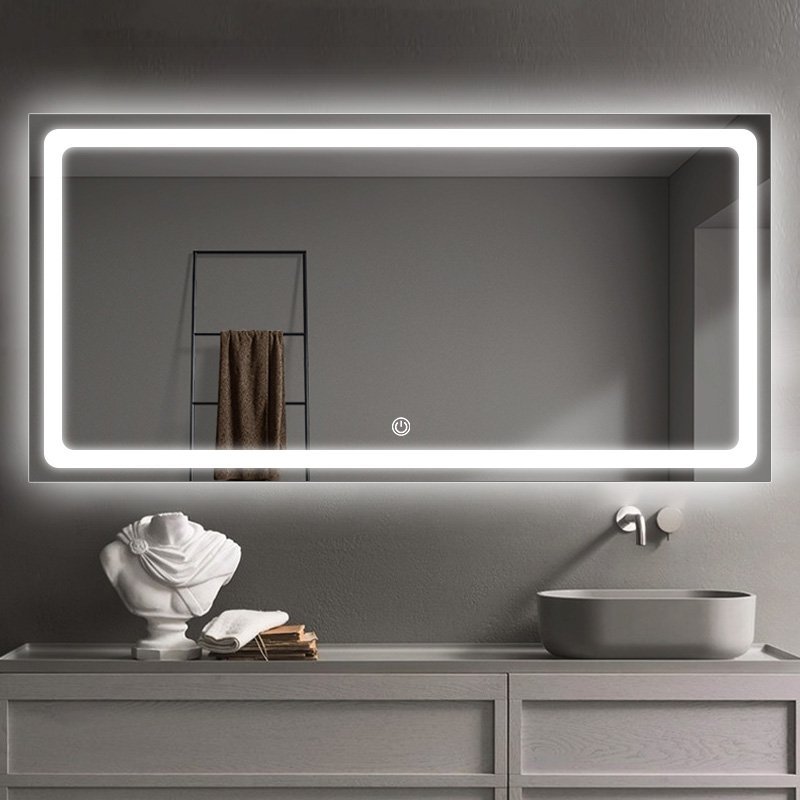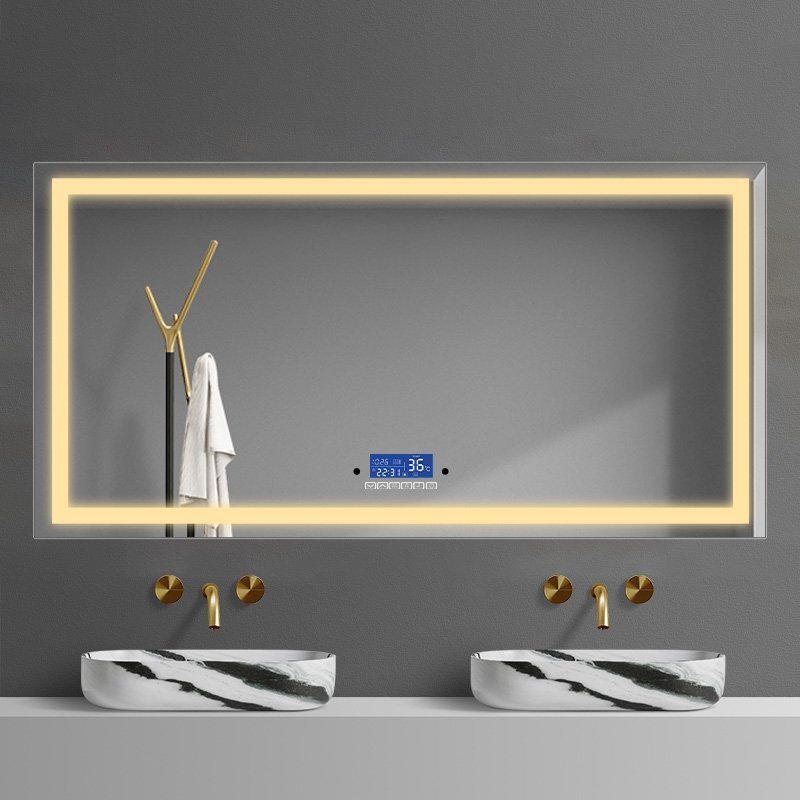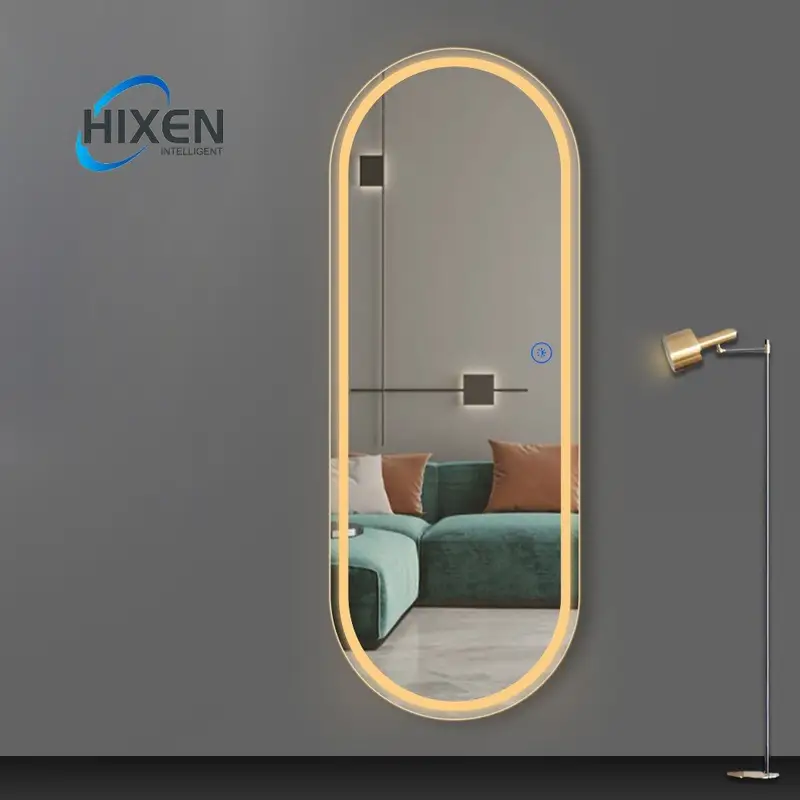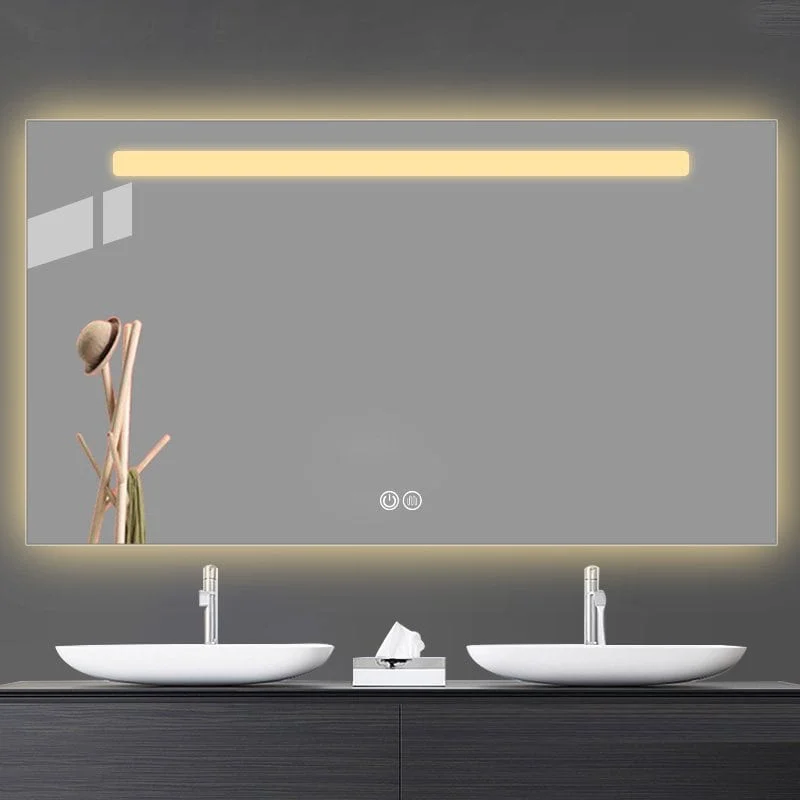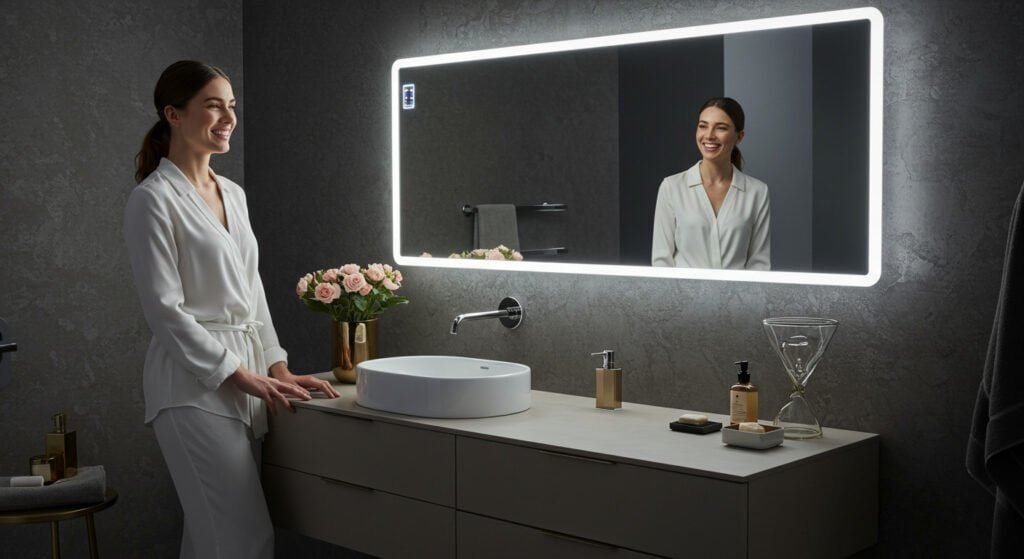|
Erhalten Sie Ihre Trinity Audio Spieler bereit...
|
Foggy, water-spotted bathroom mirrors frustrate even the most diligent homeowners. How Do You Clean Bathroom Mirrors?
To clean bathroom mirrors without streaks, use a microfiber cloth with a solution of equal parts white vinegar and water. Spray lightly onto the cloth (not directly on the mirror), wipe in a Z-pattern, and finish with a dry microfiber cloth for a streak-free shine on any mirror type.
Let’s explore more effective methods to keep your bathroom mirrors, including specialty types like LED mirrors and backlit mirrors, perfectly clean and streak-free.

What Is the Best Way to Clean Bathroom Mirrors?
But fear not, there is a solution! You can banish streaky bathroom mirrors for good with a few simple tips and tricks. Say goodbye to constantly fighting those stubborn streaks and hello to crystal clear mirrors that will stay that way.
The best way to clean bathroom mirrors combines the right cleaning solution, proper technique, and quality tools. Start by removing surface dust with a dry microfiber cloth, then apply a streak-fighting solution using the Z-pattern technique, and finish with a dry cloth for the perfect shine.
Auch, consider the timing of when you’re trying to clean your bathroom mirror. Don’t try to clean your mirror immediately after a hot shower when the glass will fog up as soon as you’re done. Instead, clean your mirror when the bathroom has been unused for at least 30 minutes so that all surfaces have had a chance to dry out and cool down.
How Can You Clean a Mirror Without Leaving Streaks?
Nothing devalues the luxury of your rectangular bathroom mirror or wall mirrors with lights quite like seeing those streaks appear out of nowhere while the mirror dries.
To clean without streaks, use vertical Z-shaped motions, working from top to bottom. This technique prevents cleaning solution from running down into already-cleaned areas. Follow immediately with a second dry microfiber cloth, buffing in circular motions to remove any remaining moisture before it can dry into streaks.
With modern lighted mirrors for bathrooms, pay special attention to the edges where the glass meets the frame or where LED light strips are installed. These points of intersection frequently collect additional moisture that
leads to streak lines if not thoroughly dried. In the case of vanity mirrors with LED lights, be particularly careful around the illuminated areas. Use the corner of your cloth to get into tight spaces without risking damage to the lighting components.

What Supplies Should You Use to Clean Mirrors?
You stand in the cleaning aisle of your grocery store, looking at the crystal rectangular diagrams with dozens of products, all of which promise streak-free mirrors. It’s overwhelming, especially when you’re trying to maintain specialty fixtures like LED bathroom mirrors or lighted vanity mirrors.
Use microfiber cloths (never paper towels), a spray bottle, and either a commercial glass cleaner or homemade solution (1:1 water and white vinegar). For bathroom vanity mirrors or glass mirrors with decorative frames, keep the spray away from wooden or metallic parts to prevent damage.
When cleaning today’s advanced modern bathroom mirrors, including backlit mirrors and lighted makeup mirrors, the electrical components make a difference. Follow the same process, but spray your solution on your cloth first, and then wipe the mirror. Don’t spray directly onto the mirror’s surface to avoid liquid seeping into the LED light fixtures or other electrical components.
Is Vinegar or Alcohol Better for Cleaning Mirrors?
When deciding whether to use vinegar or alcohol to clean your bathroom mirror, you need to look at the effectiveness, but also what works best for specialty mirrors like your LED light mirror vanity fixtures.
Vinegar works effectively on most bathroom mirror types because its acidity cuts through soap scum and hard water deposits. Alcohol evaporates quickly, making it excellent for streak prevention but less effective at cutting through bathroom grime. For standard glass mirrors, both work well, but vinegar may be gentler on special coatings found on modern bathroom mirrors.
For lighted vanity mirrors for bathroom, and in fact, any mirrors for bathroom, diluted vinegar (1:1 with water) is going to be safer around your electrical components. It tends to be a little bit more user friendly than maybe an alcohol based solution. If you have a particular problem with somebody’s stubby little fingerprints around your small bathroom mirror, that alcohol based solution can give you a little bit of an extra help without having to sit there and scrub and possibly damage some of the more delicate features of the mirror.

Can You Use Windex on Bathroom Mirrors?
Most people grab the blue bottle because that’s what they have been taught to use since they were kids, but is Windex safe to use on all mirrors, especially more sophisticated fixtures like your LED bathroom mirror?
Windex is generally safe for basic glass mirrors and most bathroom vanity mirrors. Its ammonia-based formula effectively cuts through grime and evaporates quickly. Jedoch, for mirrors with black frames or special coatings like those found on some modern lighted mirrors for bathrooms, check manufacturer recommendations first.
Be careful using Windex, especially on backlit mirrors or any kind of light up vanity mirror with integrated electronics. The ammonia can some times damage the backing of the mirror or get in somewhere you don’t want it to. Just like we talked about, put the Windex on your cleaning cloth, not dire ctly on the mirror and wipe it that way.
Is Dawn Dish Soap Suitable for Mirror Cleaning?
But now you’ve used up or lost that spray bottle of glass cleaner, is it possible to use that bottle of Dawn dish soap that’s next to your sink to clean your bathroom mirror or your lighted makeup mirror?
Dawn dish soap can effectively clean bathroom mirrors when properly diluted (just a few drops in water). Its grease-cutting ability works well on oily fingerprints and cosmetic residue that often accumulate on bathroom vanity mirrors. Jedoch, it requires thorough rinsing to prevent soap residue that leads to streaking.
Wall mirrors with lights, Beleuchteter Make -up -Spiegel, or that cool LED bathroom mirror we were talking about. If you use dish soap, you want to be extra careful to make sure you rinse all the soap off. Wieder, because these are premium surfaces, the residue is going to be more noticeable, and you definitely don’t want any soap residue that could potentially cause problems with the lighting component on that fixture.

Are Clorox Wipes Safe for Bathroom Mirrors?
In the world of convenience, the idea of just grabbing a disposable wipe off the countertop and making a quick wipe on your bathroom mirror sounds fantastic, but are they ideal for use with all mirrors?
Clorox wipes can be used on basic bathroom mirrors for quick cleaning, but they often leave streaks and residue as they dry. They’re not ideal for regular cleaning of glass mirrors or specialty mirrors like backlit mirrors due to their moisture content and chemical composition.
For any of these specialty mirrors, do not use those Clorox wipes. Those chemicals could damage any special coatings on the glass, the electrical components, or anything like that. I suggest using a microfiber cloth and a cleaning solution specifically designed for these premium mirror types.
Why Do Mirrors Sometimes Smear After Cleaning?
Frustrated, you toss the cloth on the floor and stare at the streaks. You just can’t get the hang of this modern bathroom mirror design.
Mirrors smear after cleaning primarily because of residue left behind—either from too much cleaning product, the wrong type of cloth, or cleaning in direct sunlight when the solution dries too quickly. Using dirty cloths or paper towels that leave lint behind is another common culprit.
If you have a vanity mirror with LED lights, you can see the smears even more pronounced when the light reflects off the glass. The integrated lighting acts as a highlighter, showing every imperfection and smear. With features like lighted vanity mirrors and LED lights, you need to know the correct way to clean a mirror when it comes to mirrors with premium bathroom features.

What Alternatives Are Better Than Vinegar for Cleaning?
Although vinegar is a great way to clean your mirrors, there may be certain situations or different types of mirrors where you want to use other cleaning solutions.
Commercial glass cleaners specifically formulated for streak-free results often outperform vinegar on heavily soiled mirrors. For bathroom light mirrors with persistent foggy patches, a solution of one part rubbing alcohol, one part white vinegar, and two parts water provides extra cutting power without harming the mirror surface.
To maintain the appearance of your modern lighted mirrors for bathrooms, as well as LED bathroom mirrors, you might use a glass cleaner designed for high-end optics. These specialty formulations do an excellent job keeping your mirrors spotless, and are far more effective at preventing that microscopic film from developing in the first place.
How Do You Maintain LED Bathroom Mirrors?
LED -Badezimmerspiegel, as well as other backlit mirrors, have a unique look. They serve a specific purpose and look good, but it’s also vital to clean them a particular way to maintain their appearance and function.
To maintain LED bathroom mirrors, clean the glass using standard streak-free methods but take extra precautions around electronic components. Always spray cleaning solution onto your cloth rather than directly onto the mirror, and ensure the power is turned off during cleaning. Regularly dust the light fixtures to maintain optimal brightness.
If you have LED light mirror vanity installation or light up vanity mirrors, you also want to make sure that over time, your cleaning solutions aren’t seeping into where things are connected or the controls are. Most high quality modern bathroom mirrors with integrated lighting are going to have some moisture protection, but in general, you still want to keep liquids away from electronic components to prolong the life of your investment.

How Often Should You Clean Your Bathroom Mirrors?
Setting up the right cleaning schedule for your bathroom mirror depends on how often it gets used and the type of mirror you have.
For standard glass mirrors in family bathrooms, weekly cleaning is typically sufficient. Jedoch, bathroom vanity mirrors in high-traffic areas or homes with children might require twice-weekly attention to maintain their appearance. Small bathroom mirror fixtures may need cleaning more often as they tend to show splashes and spots more prominently.
Specialty mirrors such as LED bathroom mirrors or lighted vanity mirrors for bathrooms benefit from a quick daily dusting with a microfiber cloth to keep them from getting grimy and dusty, especially the lighting features on them. It’s this minimal daily work that extends the time between deep cleanings and keeps them looking sophisticated.
Final Thoughts
You don’t need a professional or expensive products to keep your bathroom mirrors clean. You just need to do it the right way and have a little bit of daily care.
Whether you have a basic glass mirror or a sophisticated backlit mirror with LED lights, using the right materials and methods for maintenance will keep your reflection crystal clear and your bathroom looking great.
- Um zu erfahren, wie Sie den richtigen Badezimmerspiegel auswählen, klicken Sie hier.
- Um zu erfahren, wie Sie einen Spiegel installieren.
- Um zu erfahren, wie Sie den Spiegel der richtigen Größe auswählen, klicken Sie hier.
- Um zu erfahren, wie Spiegel gemacht werden, klicken Sie hier.
- Klicken Sie hier und Sie werden lernen, warum wir in Spiegeln besser aussehen.
- Klicken Sie hier 10 LED -Spiegelhersteller für 2024.
- Klicken Sie hier, um herauszufinden, warum mein Eitelkeitsspiegellicht nicht ankommt?
- Finden Sie heraus, wie groß das Badezimmerspiegel sein sollte?Klicken Sie hier
- Klicken Sie hier, wenn Sie nicht wissen, wie Sie Ihren Spiegel reinigen sollen
- Um herauszufinden, wie Sie Berührungssensorspiegel nicht funktionieren





